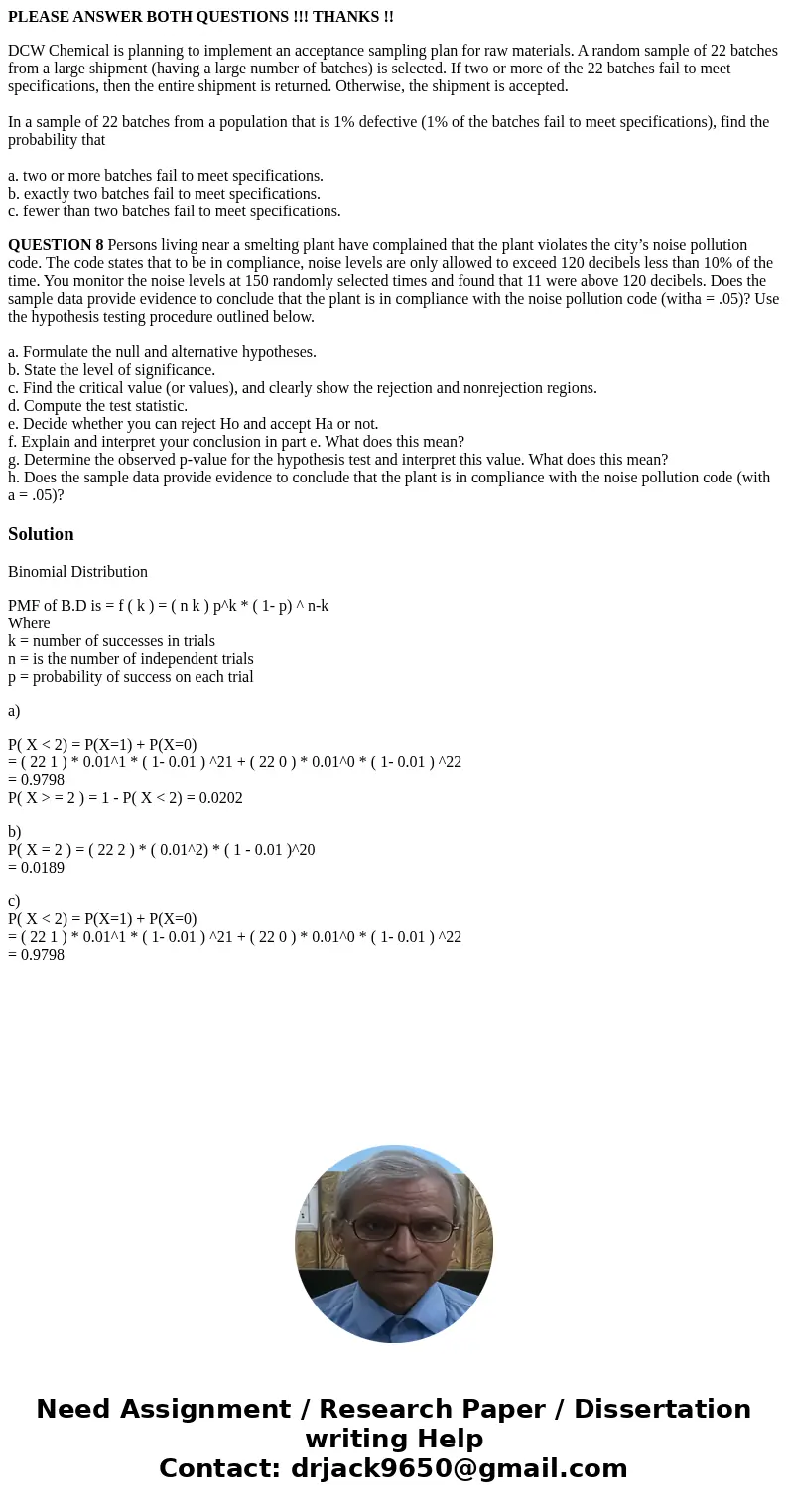PLEASE ANSWER BOTH QUESTIONS THANKS DCW Chemical is planni
PLEASE ANSWER BOTH QUESTIONS !!! THANKS !!
DCW Chemical is planning to implement an acceptance sampling plan for raw materials. A random sample of 22 batches from a large shipment (having a large number of batches) is selected. If two or more of the 22 batches fail to meet specifications, then the entire shipment is returned. Otherwise, the shipment is accepted.
In a sample of 22 batches from a population that is 1% defective (1% of the batches fail to meet specifications), find the probability that
a. two or more batches fail to meet specifications.
b. exactly two batches fail to meet specifications.
c. fewer than two batches fail to meet specifications.
QUESTION 8 Persons living near a smelting plant have complained that the plant violates the city’s noise pollution code. The code states that to be in compliance, noise levels are only allowed to exceed 120 decibels less than 10% of the time. You monitor the noise levels at 150 randomly selected times and found that 11 were above 120 decibels. Does the sample data provide evidence to conclude that the plant is in compliance with the noise pollution code (witha = .05)? Use the hypothesis testing procedure outlined below.
a. Formulate the null and alternative hypotheses.
b. State the level of significance.
c. Find the critical value (or values), and clearly show the rejection and nonrejection regions.
d. Compute the test statistic.
e. Decide whether you can reject Ho and accept Ha or not.
f. Explain and interpret your conclusion in part e. What does this mean?
g. Determine the observed p-value for the hypothesis test and interpret this value. What does this mean?
h. Does the sample data provide evidence to conclude that the plant is in compliance with the noise pollution code (with a = .05)?
Solution
Binomial Distribution
PMF of B.D is = f ( k ) = ( n k ) p^k * ( 1- p) ^ n-k
Where
k = number of successes in trials
n = is the number of independent trials
p = probability of success on each trial
a)
P( X < 2) = P(X=1) + P(X=0)
= ( 22 1 ) * 0.01^1 * ( 1- 0.01 ) ^21 + ( 22 0 ) * 0.01^0 * ( 1- 0.01 ) ^22
= 0.9798
P( X > = 2 ) = 1 - P( X < 2) = 0.0202
b)
P( X = 2 ) = ( 22 2 ) * ( 0.01^2) * ( 1 - 0.01 )^20
= 0.0189
c)
P( X < 2) = P(X=1) + P(X=0)
= ( 22 1 ) * 0.01^1 * ( 1- 0.01 ) ^21 + ( 22 0 ) * 0.01^0 * ( 1- 0.01 ) ^22
= 0.9798

 Homework Sourse
Homework Sourse